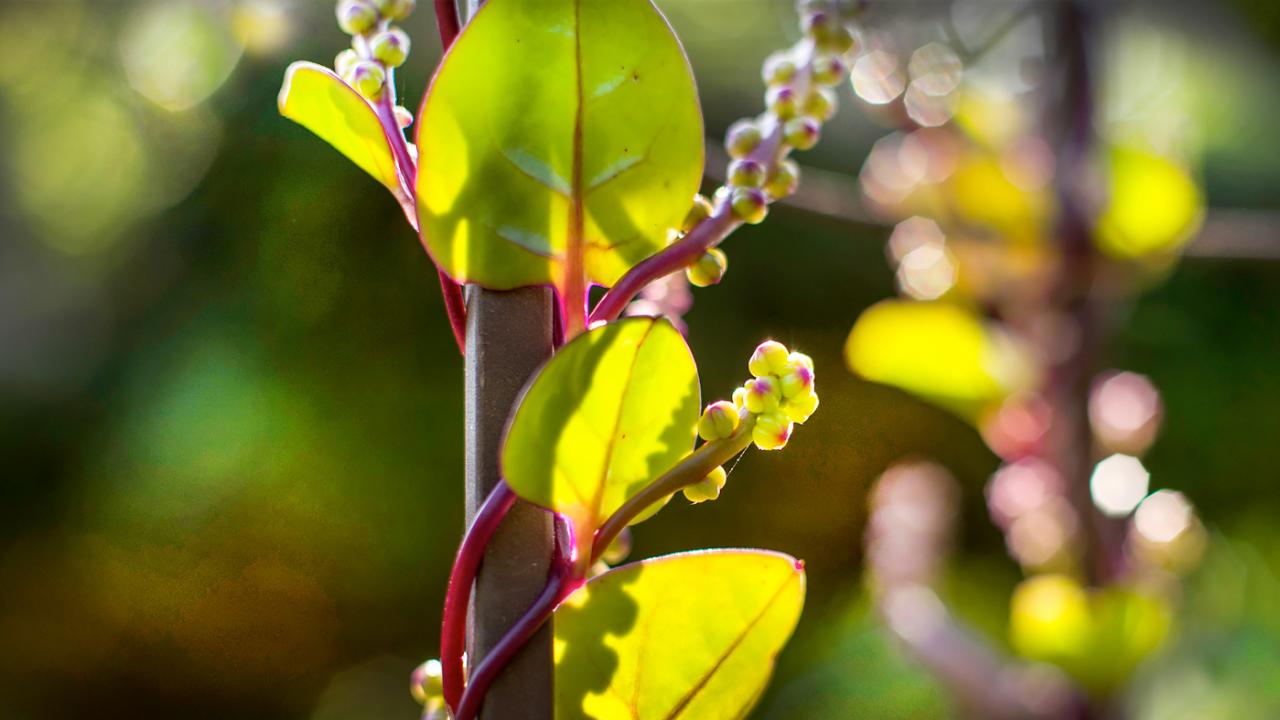

Plants &
Gardening
Garden Stories
Why you need a stinky, hairy, spineless plant now
As a long winter approaches, I’m thinking ahead about comfort plants—ones that lift your spirits. As senior horticulturist for the Regenstein Center Greenhouses at the Chicago Botanic Garden, I talk to a lot of people about indoor plants. I get that you want potted plants that are easy to take care of (hello, spider plant).
But there are other reliable ones with a bit more charm to help brighten the days ahead. Here are my recommendations:
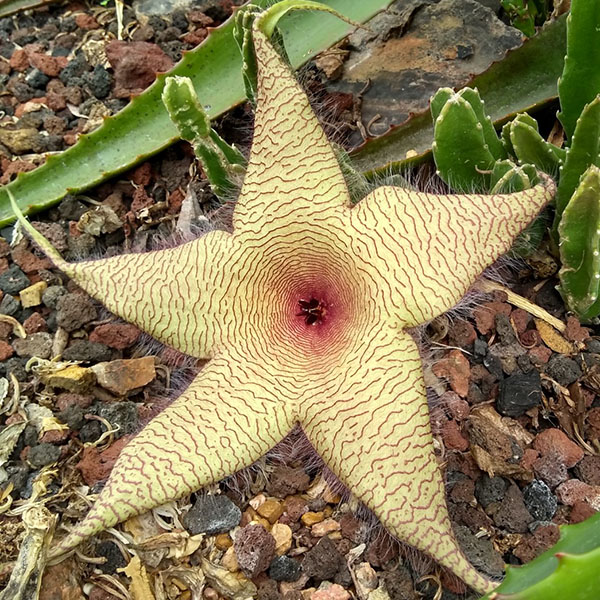
What’s that smell?
Stapelia
Stapelia are spineless succulent plants. They have large, showy flowers, some of which smell like carrion to attract pollinators. For example, the huge, hairy, star-shaped flowers of Stapelia gigantea have a decaying flesh odor that attracts flies. The plants are easy to care for. Give them plenty of indirect sunlight and water as the soil begins to dry.
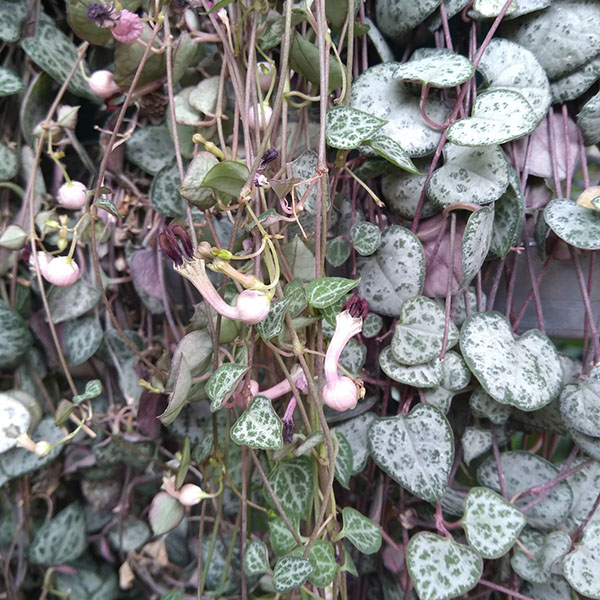
Have a heart
Ceropegia
These tolerant plants have captivating flowers that look like they escaped from a Dr. Seuss book. The foliage is heart-shaped, with blushing purple undersides. The purple hues will fade with low light levels, so keep this plant in strong, indirect light. Keep it on the drier side during the winter; water it regularly during the summer growing months.
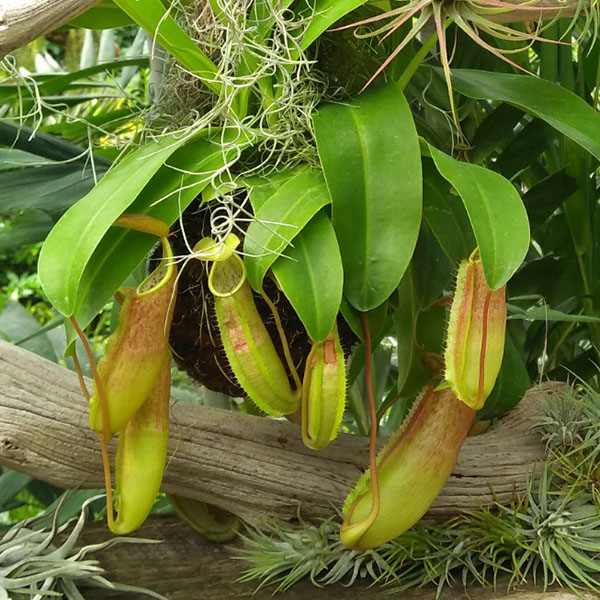
Slippery pitchers
Nepenthes
Nepenthes plants are carnivorous. These striking tropical plants have slippery pitcher-shaped modified leaves. The plants get nutrients from the insects that accidentally slide into their pitchers. No worries if you don’t have insects roaming around. Just drop one pellet of fertilizer into your pitcher plant every few months to keep it fed and happy. Keep this plant moist; it does best in a humid and bright area.
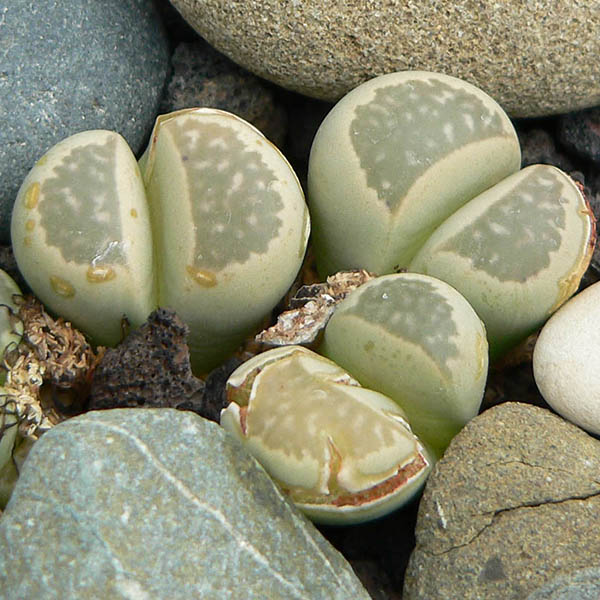
Your rock for the winter
Lithops
Lithops are fascinating succulent plants with adorable little blooms. Known as “living stones,” they mimic pebbles in arid soils. They require very little water during the autumn before they begin to grow new leaves. The older, outer leaves will provide water for the new leaves, then shrivel, and dry to a crisp. They will crack and burst if overwatered so when in doubt, do not water.
photo: Stan Shebs [CC BY-SA 3.0 (https://creativecommons.org/licenses/by-sa/3.0)]
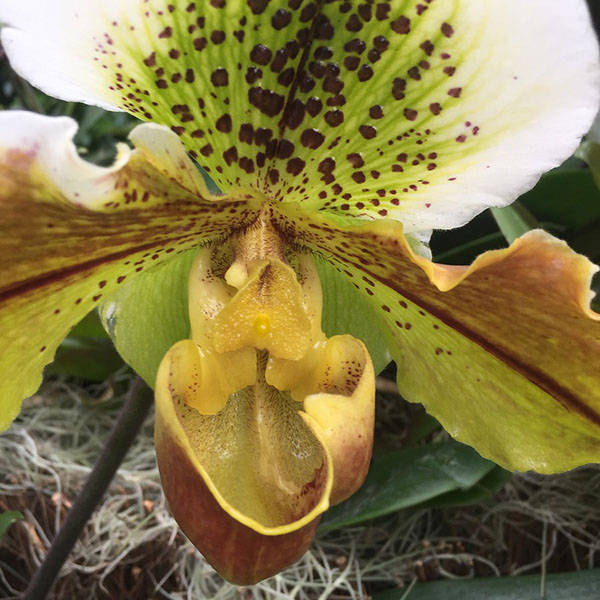
Yes, you can grow orchids
Paphiopedilum
Paphiopedilum orchids are high on my list of houseplants. They are gorgeous, have long-lasting blooms, and are easy to grow. I’ve found that these orchids will tolerate a wide range of light, from low to direct, daylong sun. Keep these orchids moist, but not sitting in water. I like soaking mine for about 10 minutes in a tub of water left out overnight and then draining them completely.

